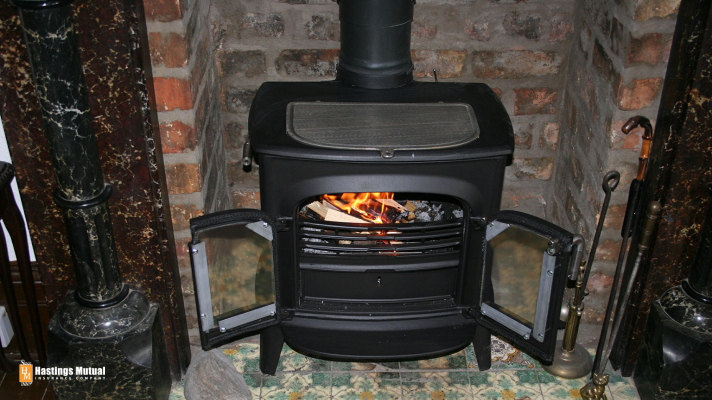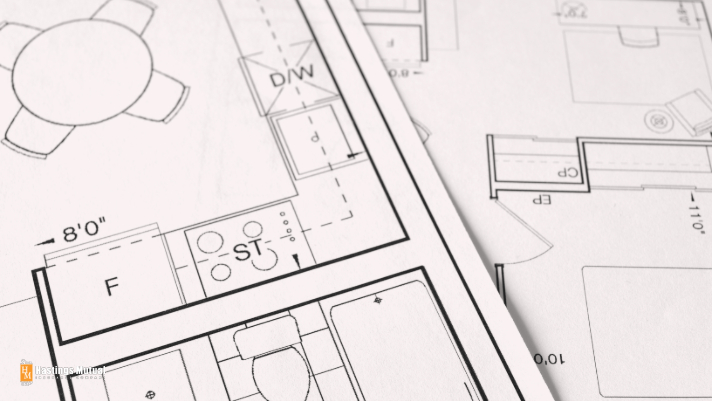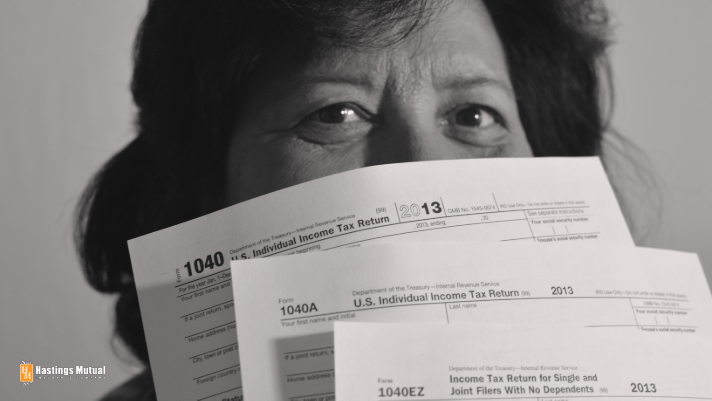A Fall Classic For Everyone
Bring one of the simple joys of fall to life in just a few steps.
It’s almost as common as pumpkin spice: the smell of a wood fire in the autumn air. For many in the six-state Hastings Mutual coverage area, fireplaces and wood stoves are a long tradition in their homes. One of the many tools we offer our local independent insurance agent partners is training in our different products and safety tips for our policyholders. And one of our most popular training courses is wood stove safety.
The training materials feature dozens of photos of wood stoves with advice on how to make sure they’re safe. It’s information that’s useful not just for your agent, but for you too. There are many dos and don’ts for wood stoves, which makes sense since you’re working with fire. Here’s a few of the tips we recommend for setting up a stove and using it once it’s in place.
When you install the wood stove, make sure you follow the manufacturer’s instructions and guidelines from the National Fire Protection Association (NFPA), so it’s installed appropriately. The stove needs to be properly ventilated and kept clear of flammables.
- Make sure there’s enough room between the stove and the fuel source. The NFPA recommends a 36-inch clearance between a room heater stove and any combustible surface. Material like stone or brick can be closer, but the walls and the wood you’re burning need to be far enough away to not catch fire.
- Put the stove on a sturdy and steady fire-resistant base. Again, brick, stone, or metal can be used to keep the stove in place and prevent it from moving off-balance.
- Don’t use oil, gas, or garbage in a wood stove fire.
- Have a fire extinguisher, smoke alarm, and carbon monoxide detector near the stove — and make sure they’re all working correctly.
- Inspect the chimney before use and keep the area near the stove well-ventilated.
- Make sure the fire is completely out before going to bed or leaving the area.
- Properly dispose of the ashes in a metal container with a secure lid. Douse them with water and let them cool fully before placing them in the trash.
A lot of these may seem obvious, especially if you have a fireplace or you light campfires throughout the summer. But wood stoves contribute to more than 4,000 house fires in the U.S. every year.

Once you have your wood stove set up and burning, you’ll need to make sure it’s in good condition each year before cold sets in. Here’s what our safety reviewers recommend for regular maintenance of your wood stove and the chimney it’s attached to.
- Burn dry, seasoned wood.
- Check for loose bricks and mortar.
- A spark arrestor is a screen or device that keeps flammable material from escaping an exhaust pipe like a chimney. It blocks hot things from getting out of the chimney and starting a fire. It also stops things from getting into a chimney, like rain, animals, and wind gusts that can put out a flame. We recommend one along with a chimney cap for your wood stove.
- Clean the chimney of creosote at least annually. Creosote is the residue from improperly burned fuel. It sticks to the inside of a chimney and builds up over time. You can usually scrape it off the walls of the chimney.
- Store wood outside when possible. If some wood is staged indoors, don’t keep the wood or any other combustible material within 3 feet of a fireplace or wood-burning stove.
A wood-burning stove is a common, and very enjoyable, part of the fall and winter throughout our six-state service area. By following a few simple guidelines, your wood burner can be a pleasant part of the season for you and your family for many years.
Questions? Let us know in the comments.
The Mutual Understanding blog and Hastings Mutual videos are made available for educational purposes only. The information referred to is not an official company statement, corporate policy, or offer of coverage. Refer to your insurance policy for specific coverage. There is no representation as to the accuracy or completeness of any information found by following any link on this site. Please contact your local independent insurance agent with further questions and for more details on any insurance policy-related information you read here.
© 2020 Hastings Mutual Insurance Company. All rights reserved.
Related Blog Posts
-
 Fireproof Your Home Without Spending Any Money
Fireproof Your Home Without Spending Any Money
Eight easy ways to prevent losing your home in a fire.
-
 Make Your Holiday Meal Easier And Safer
Make Your Holiday Meal Easier And Safer
It doesn't take much to make your home perfect for cooking, family, and friends.
-
 Four Keys To Financial Safety
Four Keys To Financial Safety
A few simple ways to keep your money secure, online and on paper.
Hastings Mutual Insurance Company
404 E. Woodlawn Ave.
Hastings, MI 49058
Monday-Friday
8:00 a.m. - 4:30 p.m. (EST)
(800) 442-8277



